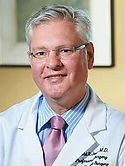A prospective study of circulating tumor DNA to guide matched targeted therapy in lung cancers Journal Article
| Authors: | Sabari, J. K.; Offin, M.; Stephens, D.; Ni, A.; Lee, A.; Pavlakis, N.; Clarke, S.; Diakos, C. I.; Datta, S.; Tandon, N.; Martinez, A.; Myers, M. L.; Makhnin, A.; Leger, Y.; Yu, H. A.; Paik, P. K.; Chaft, J. E.; Kris, M. G.; Jeon, J. O.; Borsu, L. A.; Ladanyi, M.; Arcila, M. E.; Hernandez, J.; Henderson, S.; Shaffer, T.; Garg, K.; DiPasquo, D.; Raymond, C. K.; Lim, L. P.; Li, M.; Hellmann, M. D.; Drilon, A.; Riely, G. J.; Rusch, V. W.; Jones, D. R.; Rimner, A.; Rudin, C. M.; Isbell, J. M.; Li, B. T. |
| Article Title: | A prospective study of circulating tumor DNA to guide matched targeted therapy in lung cancers |
| Abstract: | Background Liquid biopsy for plasma circulating tumor DNA (ctDNA) next-generation sequencing (NGS) is commercially available and increasingly adopted in clinical practice despite a paucity of prospective data to support its use. Methods Patients with advanced lung cancers who had no known oncogenic driver or developed resistance to current targeted therapy (n=210) underwent plasma NGS, targeting 21 genes. A subset of patients had concurrent tissue NGS testing using a 468-gene panel (n=106). Oncogenic driver detection, test turnaround time (TAT), concordance, and treatment response guided by plasma NGS were measured. All statistical tests were two-sided. Results Somatic mutations were detected in 64.3% (135/210) of patients. ctDNA detection was lower in patients who were on systemic therapy at the time of plasma collection compared with those who were not (30/70, 42.9% vs 105/140, 75.0%; OR = 0.26, 95% CI = 0.1 to 0.5, P<.001). The median TAT of plasma NGS was shorter than tissue NGS (9 vs 20days; P<.001). Overall concordance, defined as the proportion of patients for whom at least one identical genomic alteration was identified in both tissue and plasma, was 56.6% (60/106, 95% CI = 46.6% to 66.2%). Among patients who tested plasma NGS positive, 89.6% (60/67; 95% CI = 79.7% to 95.7%) were also concordant on tissue NGS and 60.6% (60/99; 95% CI = 50.3% to 70.3%) vice versa. Patients who tested plasma NGS positive for oncogenic drivers had tissue NGS concordance of 96.1% (49/51, 95% CI = 86.5% to 99.5%), and directly led to matched targeted therapy in 21.9% (46/210) with clinical response. Conclusions Plasma ctDNA NGS detected a variety of oncogenic drivers with a shorter TAT compared with tissue NGS and matched patients to targeted therapy with clinical response. Positive findings on plasma NGS were highly concordant with tissue NGS and can guide immediate therapy; however, a negative finding in plasma requires further testing. Our findings support the potential incorporation of plasma NGS into practice guidelines. |
| Keywords: | adenocarcinomas; phase-2; open-label; cabozantinib; cell-free dna |
| Journal Title: | JNCI: Journal of the National Cancer Institute |
| Volume: | 111 |
| Issue: | 6 |
| ISSN: | 0027-8874 |
| Publisher: | Oxford University Press |
| Date Published: | 2019-06-01 |
| Start Page: | 575 |
| End Page: | 583 |
| Language: | English |
| ACCESSION: | WOS:000474267400008 |
| DOI: | 10.1093/jnci/djy156 |
| PROVIDER: | wos |
| PMCID: | PMC6579739 |
| PUBMED: | 30496436 |
| Notes: | Article -- djy156 -- Source: Wos |
Altmetric
Citation Impact
BMJ Impact Analytics
MSK Authors
Related MSK Work



























